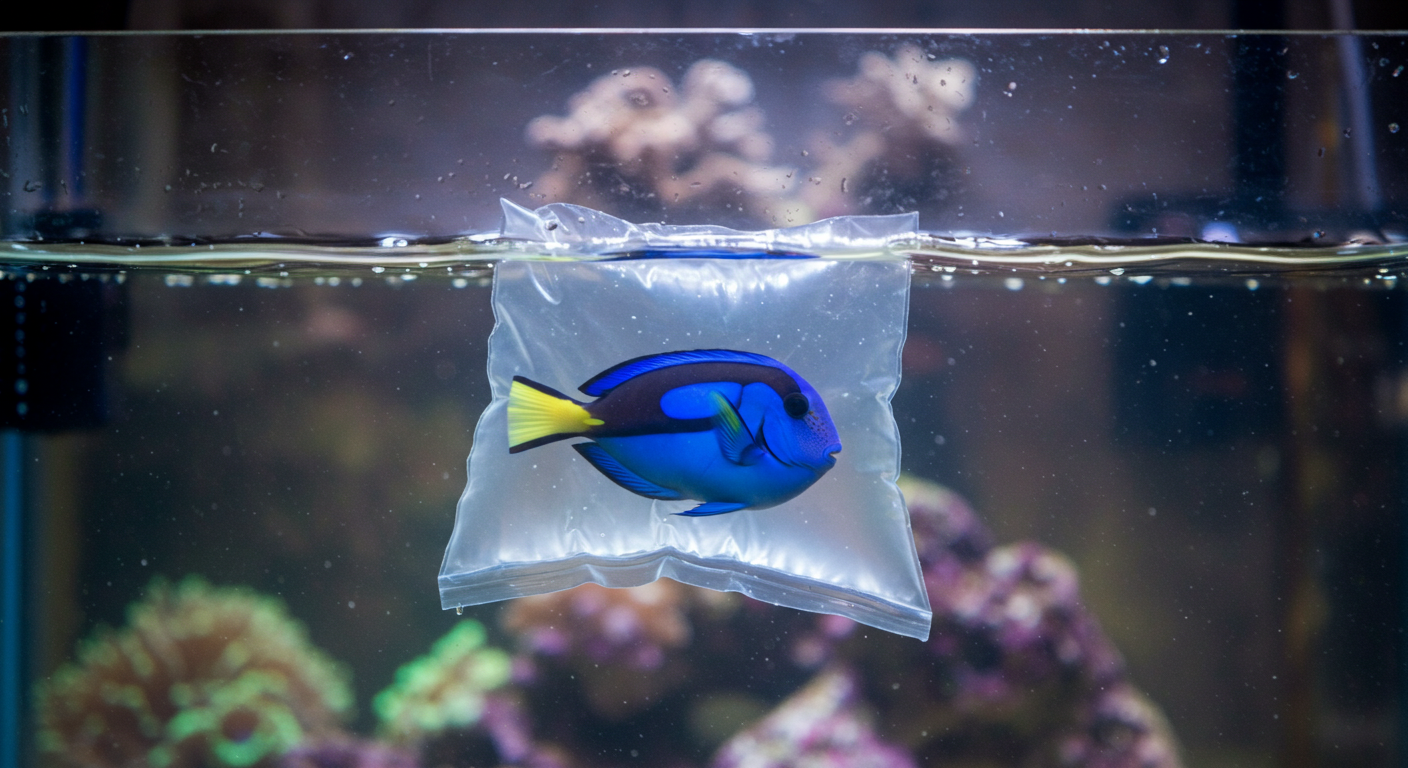

Methods of Introducing Saltwater Fish

Acclimating new saltwater fish is a crucial step to ensuring their health and success in their new environment. Several factors influence the best acclimation method, including the number of fish in a single transport bag, water volume, fish size relative to the bag, and even the timing of their last meal. Waste accumulation in the bag can complicate the process, making a thoughtful approach essential. Below are three reliable acclimation methods to ease fish into their new habitat safely.
Method One: The Floating Technique
-
Turn off the aquarium lights to minimize stress.
-
Place the sealed fish bag on the surface of the aquarium water and let it float for 15 to 30 minutes. The bag should contain enough air to stay buoyant.
-
Use a thermometer to verify that the bag water temperature matches the aquarium water.
-
Carefully release the fish without introducing store water into your tank. Either:
-
Pour the fish and store water into a bucket, then transfer the fish separately to the aquarium, or
-
Use a net to capture the fish over a bucket or sink before releasing them (be cautious with fish like angels and mandarins that have delicate spines that could get caught).
💡 Tip: Store water may contain copper or medications—never add it to your aquarium!
Method Two: Gradual Water Addition
-
Turn off the aquarium lights before beginning.
-
Float the sealed fish bag in the tank or sump for 15 minutes.
-
Open the bag and roll down the sides to create an air pocket, ensuring it continues to float.
-
Slowly add aquarium water to the bag in increments:
-
Add about one-third of the bag’s volume.
-
Wait 10 minutes, then repeat the process three more times.
-
-
Release the fish using the same technique as Method One—avoiding contamination from store water.
Method Three: Drip Acclimation (For Sensitive Fish & Invertebrates)
-
Turn off the lights to reduce stress.
-
Float the sealed bag for 15 to 30 minutes to match temperatures.
-
Prepare a clean, non-toxic container or bucket based on the fish's size (a one-gallon container works for two small fish).
-
Gently transfer the fish into the bucket without store water.
-
Add an ammonia neutralizer to counter any waste buildup.
-
Begin a slow drip acclimation using airline tubing with an adjustable valve:
-
Start a siphon from the aquarium and adjust it to two to four drops per second.
-
Cover the bucket to prevent fish from jumping out.
-
-
When the water level doubles, remove half and discard it.
-
Repeat until the water level doubles again.
-
Transfer the fish one at a time into the aquarium using a fish-safe net or container (avoiding nets for fish with delicate rays).
-
Top off the aquarium with premixed saltwater to restore lost volume.
💡 Additional Tips:
-
Acclimate fish separately from corals and invertebrates.
-
Keep the tank lights off for a few hours to help fish settle in.
-
Feed a small amount to distract existing tank inhabitants and prevent territorial disputes.
Keeping your aquarium pristine is just as important as setting it up correctly. Maintaining clean water and healthy filtration ensures a thriving environment for your fish. Aquatic Experts offers high-quality filter pads, water conditioners, and cleaning materials designed to keep your tank in top shape.
Whether you need premium filter media to trap debris, water conditioners to neutralize harmful chemicals, or maintenance essentials for crystal-clear water, Aquatic Experts has you covered. Invest in the best filtration solutions today and keep your aquarium thriving!
Dependable Products For All Types Of Aquariums and Ponds
Join the CLUB for new videos, discount codes, and more!
Join The Club for A 15% OFF Coupon
Aquatic Experts provides simple solutions, tested products, and expert information to aid aquarium and pond hobbyists in creating exceptionally beautiful, healthy aquariums and ponds.


